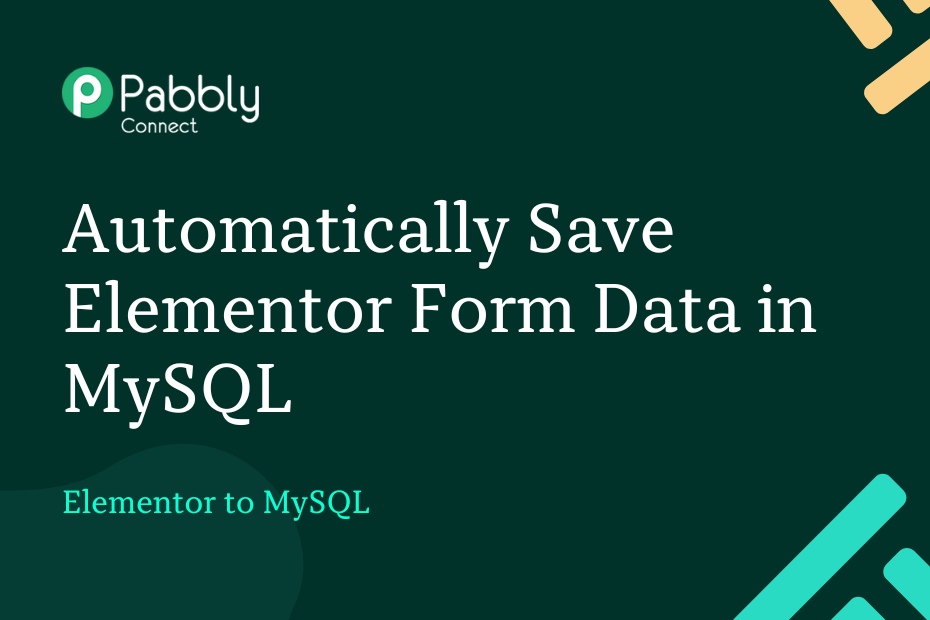In this post, we will look at how you can integrate Elementor with MySQL and record Elementor Form responses in a new row of your MySQL database.
This automation requires a one-time setup, for which we will use Pabbly Connect.
We will first link Elementor with Pabbly Connect to capture form responses, then link Pabbly Connect with MySQL and record the captured responses.
Steps to Automatically Save Elementor Form Responses in MySQL Database
1. Sign In / Sign Up to Pabbly Connect and Create a Workflow
2. Establish a Connection between Elementor and Pabbly Connect
3. Setup MySQL as the Action App to Save Responses
Step 1:- Sign In / Sign Up to Pabbly Connect and Create a Workflow
A. Sign In / Sign Up
To begin this process, visit Pabbly Connect and create your account by clicking on the ‘Sign Up Free’ button. You can also click on Sign In if you already have an account.
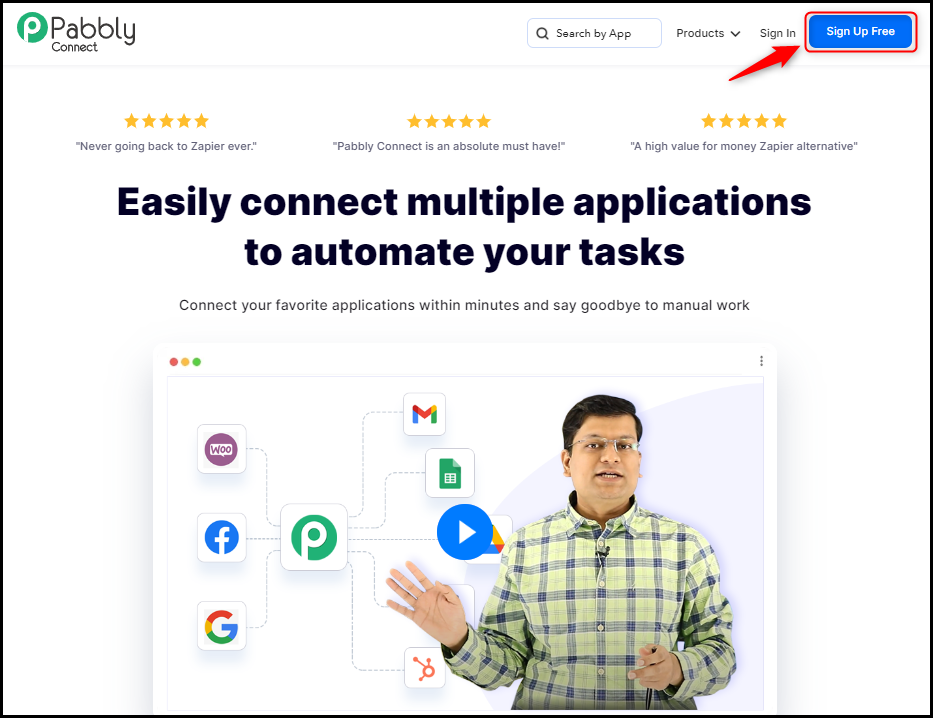
Click on the Pabbly Connect ‘Access Now’ button

B. Create Workflow
To create a new workflow, click the ‘Create Workflow’ button.
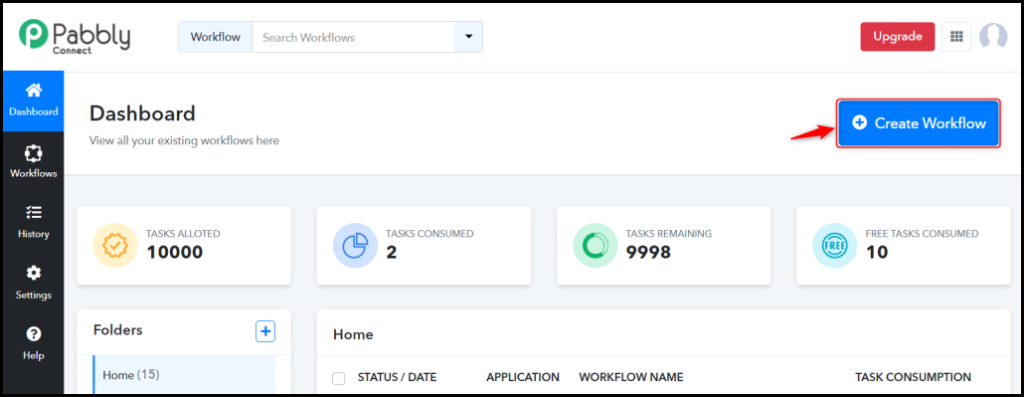
Name your workflow, and click on ‘Create’.
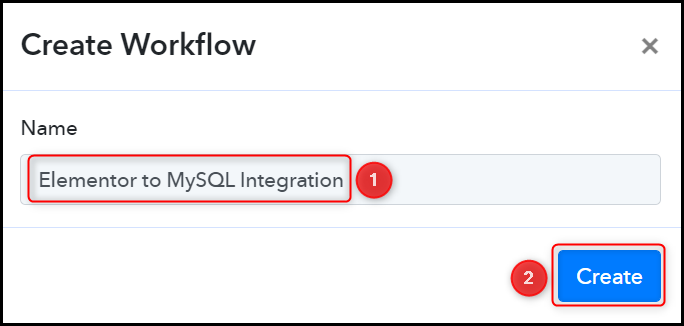
Step 2:- Establish a Connection between Elementor and Pabbly Connect
We will now look at the steps through which we will establish a link between Elementor and Pabbly Connect – This will help us to capture the Elementor Form responses.
A. Trigger App
Trigger allows us to choose the application that will receive the data for Pabbly Connect. In our case, it would be Elementor.
Choose ‘Elementor’ as the Trigger App, and select ‘New Form Submission’ as an Action Event.

B. Webhook URL
A new Webhook URL will get generated. You will use this Webhook URL to create a connection with your Elementor account. Copy the Webhook URL.

As soon as you Copy the Webhook URL, Pabbly Connect will start looking to capture data from Elementor, as indicated by the rotating Waiting For Webhook Response button.

C. Connect Elementor For WordPress Account
Go to your Elementor form, add ‘Webhook’ as an action, and paste the Webhook we copied earlier.
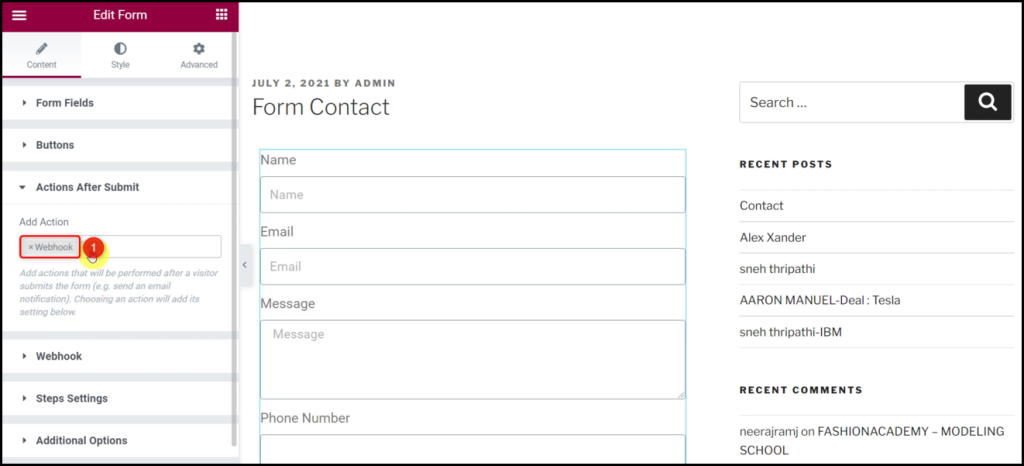
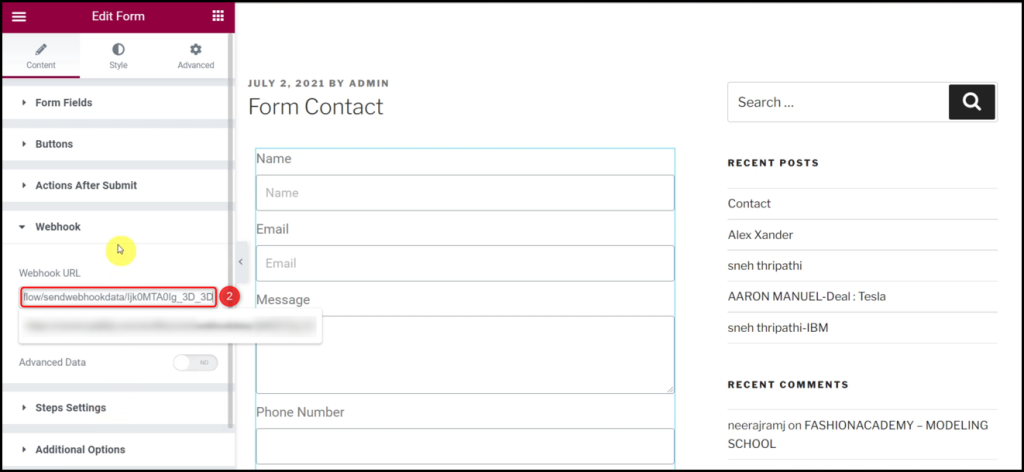
D. Test Connection
Make a form submission using dummy details, and check for the Received Response.
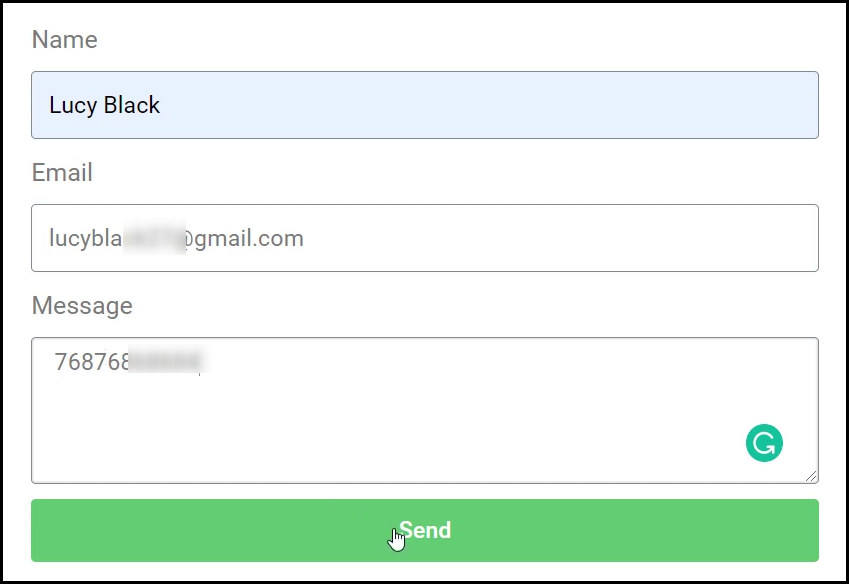
Switch back to Pabbly Connect, expand Response Received, and the data you entered must be visible, thus confirming our established connection.
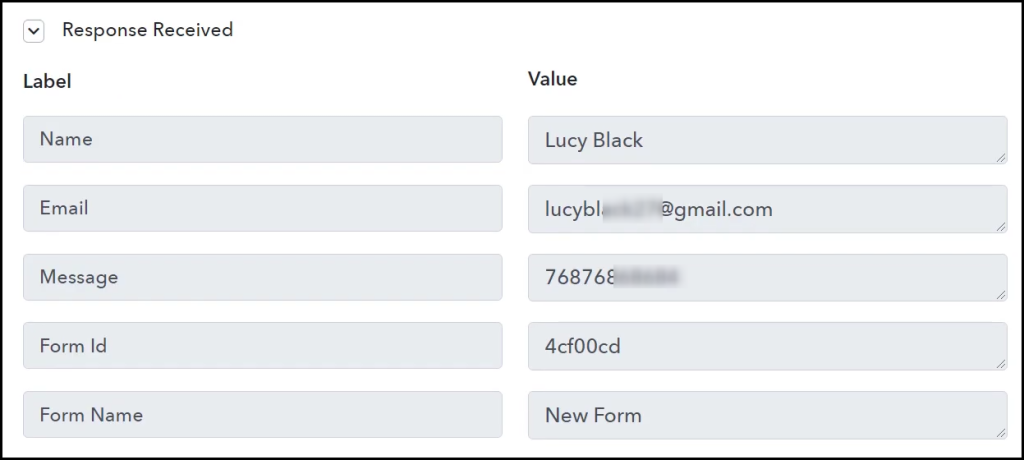
We have established a link between Elementor and Pabbly Connect. Pabbly Connect will now automatically capture the responses upon each form submission.
Step 3:- Setup MySQL as the Action App to Save Responses
Action allows us to choose the application that will get executed by the workflow trigger.
We essentially want to save the captured Elementor Form responses in the MySQL database. Thus, MySQL will be our Action App.
A. Action App
Choose ‘MySQL’ as your Action App, select ‘Insert Row’ as an Action Event, and click on ‘Connect’.
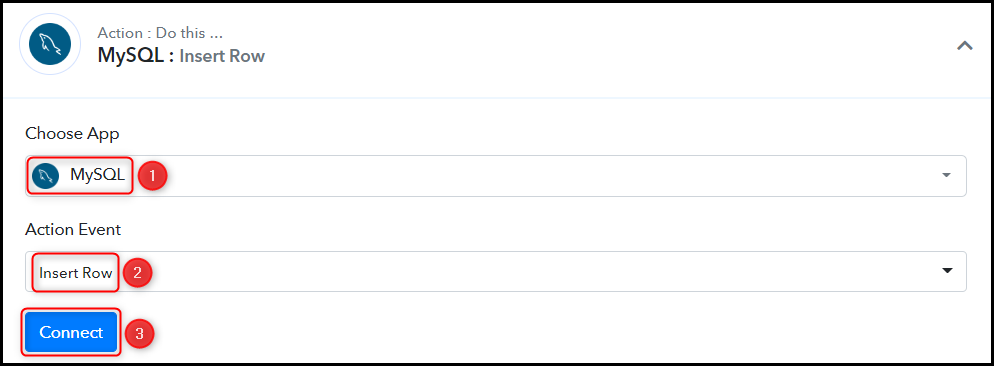
B. Connect MySQL Account
To connect with your MySQL account, select ‘Add New Connection’, and you will be asked to enter your Database Username, Database Password, Host, Database, and Port.

Find and enter these details from your MySQL account and click on ‘Save’.
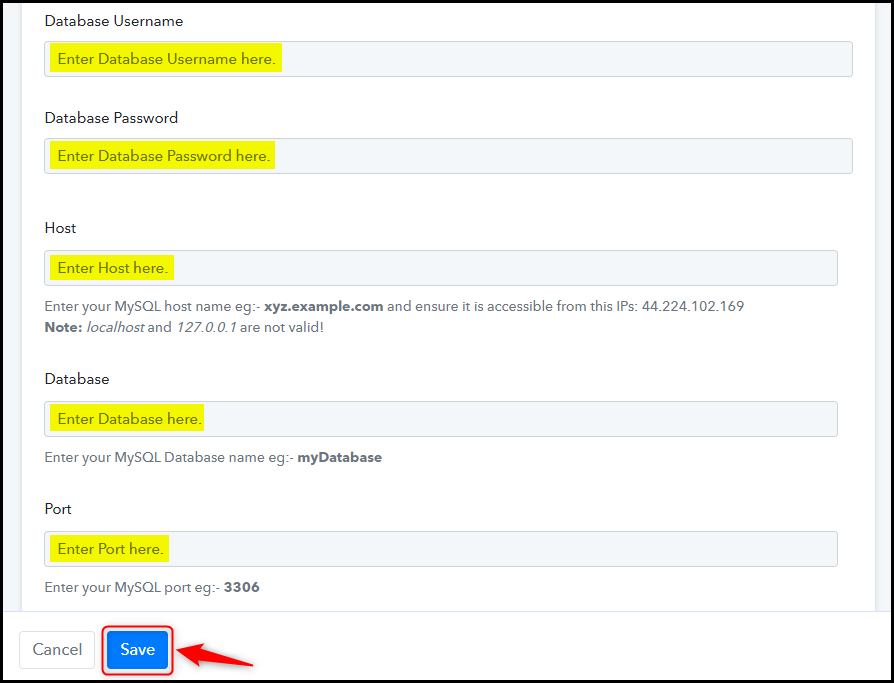
Select the Table where you want to save the data.

C. Map Necessary Fields
Now that you have connected your MySQL account, all you need is to map the necessary details from the steps above. Mapping ensures our data remains dynamic and changes as per the received responses.
Map the Name from the step above.
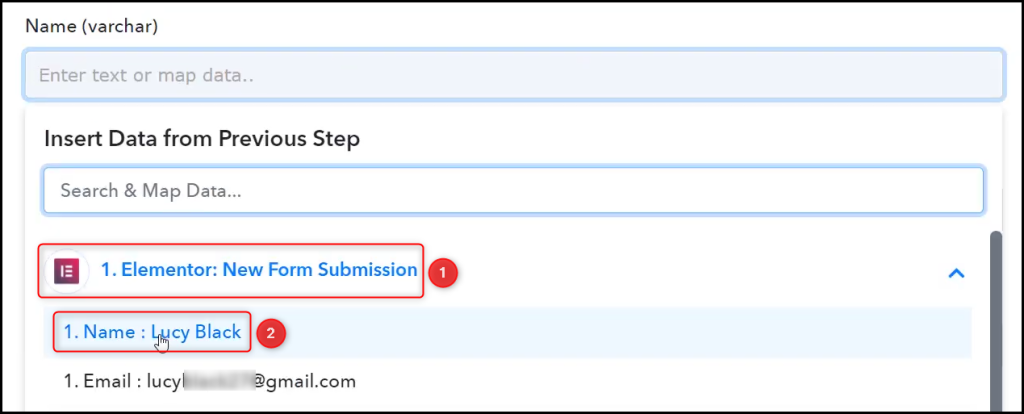

Similarly, map the other fields, and click on ‘Save & Send Test Request’.
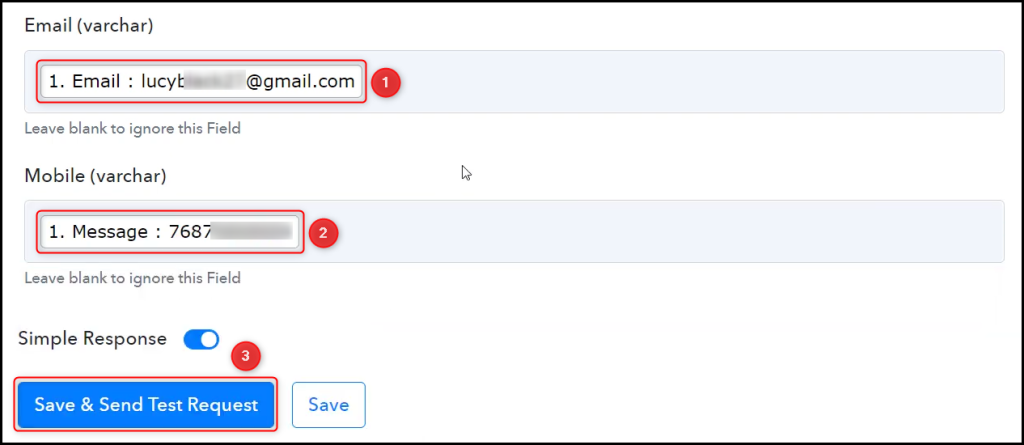
The moment you click on Save & Send Test Request, the data will start reflecting in your MySQL database.
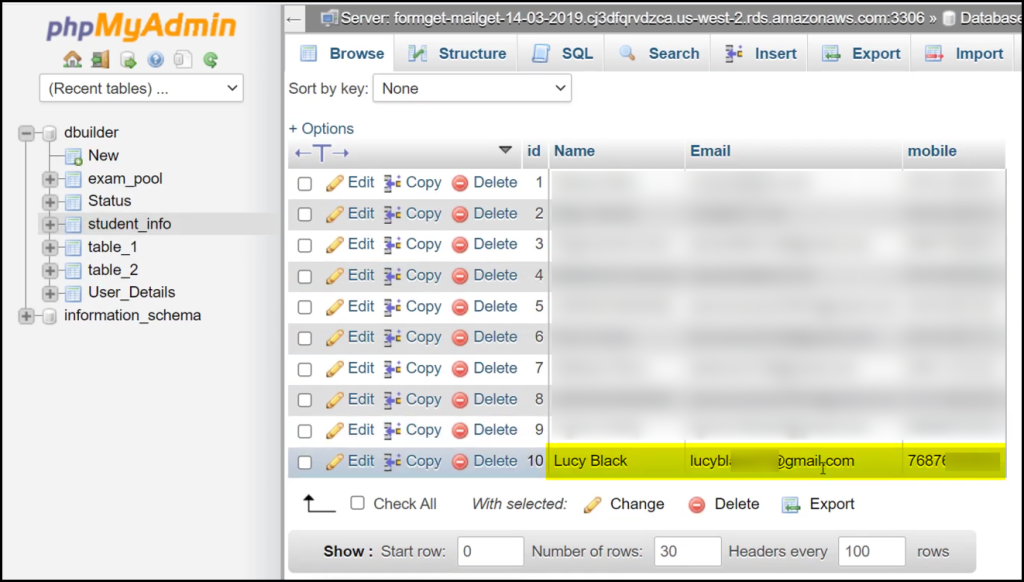
Our automation is complete. We have successfully integrated Elementor with MySQL. Each time a new user responds to your Elementor Form, their responses will automatically be saved in your MySQL database.
You can copy this entire workflow by clicking this link.
Sign Up for a free Pabbly Connect account, and start automating your business
Subscribe to our Youtube Channel for more such automation
For any other queries, visit our forum
